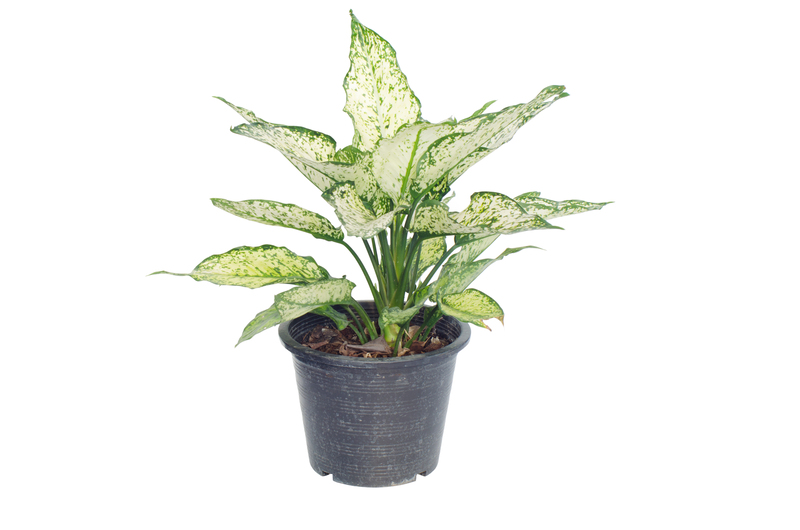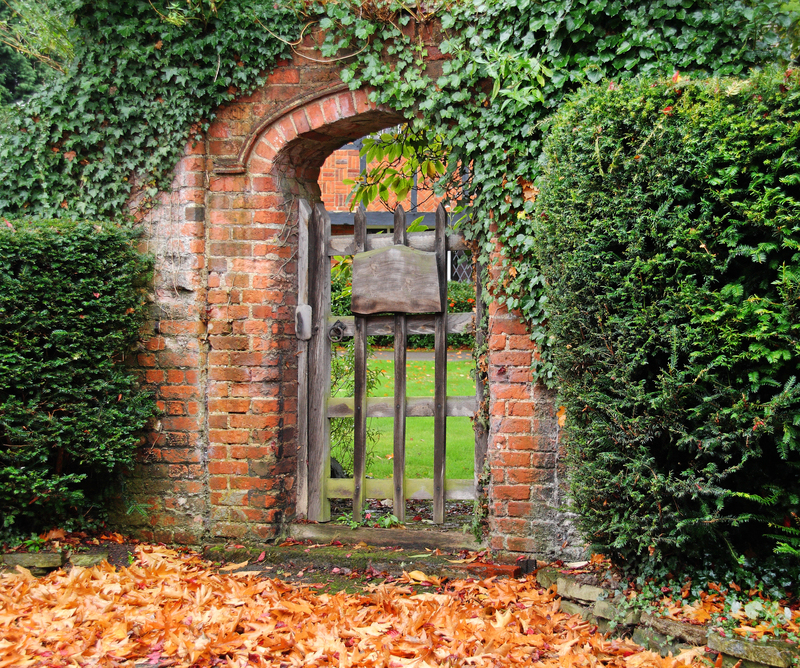All About Container Gardens: Tips and Tricks
Posted on 04/06/2025
All About Container Gardens: Tips and Tricks for Vibrant Spaces
Have you ever wished for a lush, thriving garden but felt limited by space or soil conditions? Container gardening is the answer for urban dwellers, renters, or anyone seeking a versatile way to add nature into their lives. This comprehensive guide will walk you through everything you need to know, from picking the right containers to selecting plants and troubleshooting common issues. Let's dive into the captivating world of container gardens and discover handy tips and tricks to help your green sanctuary flourish!

What is a Container Garden?
A container garden refers to the practice of growing plants in pots or other containers instead of directly in the ground. This flexible technique allows for gardening in small spaces, on patios, balconies, window sills, and even indoors. Whether you're planting flowers, herbs, vegetables, or succulents, container gardening puts you in total control of soil quality, drainage, and plant arrangement.
- Perfect for small spaces - Use on balconies, patios, decks, or indoors.
- Flexible and movable - Rearrange or bring sensitive plants indoors as seasons change.
- Diverse and creative - Mix colors, textures, and plant types for customizable results.
Benefits of Container Gardening
Container Gardening Advantages
Why choose container gardens? Here are some key advantages:
- Space Efficiency: Grow your favorite plants even in limited or non-traditional spaces.
- Soil Control: Customize the soil type for each plant in different containers for optimal growth.
- Pest and Disease Management: Easier to monitor and handle pest outbreaks in isolated containers compared to a traditional garden bed.
- Mobility and Versatility: Containers can be moved to capture sunlight, avoid harsh weather, or suit your aesthetic preferences.
- Reduced Weeding: Pots and containers offer less exposure to weeds, saving you time and effort.
Choosing the Best Containers
Material Options for Container Gardens
Containers come in a range of materials, each with their own strengths and style:
- Terra Cotta: Classic look, excellent breathability, but can dry out quickly and crack in cold weather.
- Plastic: Lightweight, affordable, retains moisture well, and comes in a variety of colors and sizes.
- Ceramic: Beautiful glazes and colors, but heavy and may require extra care with drainage.
- Metal: Modern aesthetics, durable but may heat up fast and rust over time if not treated.
- Wood: Rustic charm, good insulation against temperature changes, but may rot without proper lining.
- Concrete: Ultra-durable, can withstand winter, but their weight can make them hard to move.
Important Tips for Container Selection
- Drainage is vital - Ensure containers have at least one drainage hole to prevent root rot.
- Size matters - Choose a pot that gives roots enough space to grow, but not so large that excess soil remains soggy.
- Consider style - Your containers should complement your garden's aesthetic and your home decor.
Selecting & Arranging Plants for Your Container Garden
Mixing and Matching: Plants That Thrive Together
A successful container garden relies on combining plants with similar light, water, and soil needs. Aim for visual interest with a mix of colors, heights, and textures.
- Sun Lovers: Geraniums, petunias, basil, tomatoes, and rosemary thrive on sunny patios or balconies.
- Shade Fans: Ferns, hostas, impatiens, begonias, and parsley do well in shadier spots.
- Herb Harmony: Try basil, oregano, thyme, and parsley together for a handy culinary container garden.
- Edible Options: Tomatoes, peppers, lettuce, spinach, strawberries and dwarf fruit trees are all container-friendly.
A popular tip for container garden design is the "thriller, filler, spiller" formula:
- Thriller: Bold, upright plants that provide height such as ornamental grasses, salvia, or dwarf sunflowers.
- Filler: Medium-height plants that add body, like coleus, impatiens or begonias.
- Spiller: Cascading plants such as sweet potato vine, lobelia, or trailing petunias that spill over the edges.
Soil and Fertilizer: The Foundation of Healthy Container Gardens
Choosing the Right Soil Mix
Use a high-quality potting mix rather than garden soil, as it is lighter, drains well, and resists compaction. Many blends include added ingredients like compost, perlite, vermiculite, or coconut coir to improve water retention and aeration.
- Avoid topsoil: It can be too heavy and may introduce pests/disease.
- Customize: Specialized mixes are available for cacti/succulents, orchids, or acid-loving plants.
- Homemade mix: Combine peat (or coco coir), perlite, and compost for a cost-effective potting mix.
Fertilizing Tips for Lush Growth
- Frequent feeding: Most container plants exhaust nutrients quickly - feed every 2-4 weeks with a balanced, water-soluble fertilizer.
- Organic options: Fish emulsion, worm castings, or compost tea enrich soil naturally and support soil microbes.
- Slow-release fertilizers: Mix into the soil at planting for less-frequent, steady nutrition throughout the season.
Watering Strategies for Container Gardens
Proper watering is the lifeline of any container garden. With limited soil volume and fast drainage, containers dry out quicker than in-ground beds.
Top Watering Tips
- Daily monitoring: Check the soil moisture with your finger - water when the top inch feels dry.
- Water deeply: Ensure water reaches all the roots; soak until water flows from drainage holes.
- Morning routines: Water early in the day to prevent heat stress and fungal diseases.
- Mulch to retain moisture: Add a layer of bark or decorative gravel to slow evaporation.
- Self-watering containers: These can be a great option for travelers or hot climates.
Creative Container Garden Ideas
Think Outside the Pot - Unconventional Planters
A unique aspect of container gardening is the ability to repurpose everyday items into planters. Try these fun alternatives:
- Baskets lined with plastic
- Old boots or shoes
- Tea tins or coffee cans
- Dresser drawers
- Vintage crates or toolboxes
- Hanging kitchen colanders
*Tip: Always add drainage holes to unconventional planters!
Arranging Your Container Garden
- Group pots of varying heights for visual interest, keeping sun-lovers in front of south-facing windows and shade plants behind.
- Cluster similar colors for bold impact or create a natural cottage look with mixed hues.
- Add garden accents: small statues, fairy garden elements, or decorative gravel can enhance your design.
Common Problems & Solutions
Container Gardening Troubleshooting
-
Wilting or yellow leaves?
- Check watering routine or look for root rot. Make sure containers drain well and never sit in water trays for long.
-
Pale, stunted growth?
- Plants may be root-bound - repot into a larger container or add fertilizer.
-
Pests like aphids or spider mites?
- Spray with mild soap solution or use horticultural oils. Quarantine new or infected plants.
-
Leaf spots or mildew?
- Improve air circulation, avoid overhead watering, and remove affected leaves promptly.
Seasonal Container Garden Care
Summer Care
- Water more often, especially in hot weather.
- Deadhead spent flowers to promote new blooms.
- Fertilize regularly to replenish lost nutrients.
Winter Strategies
- Bring sensitive plants indoors before the first frost.
- Group containers together for mutual warmth and shelter from wind.
- Water sparingly, as most plants slow their growth in winter.
- Wrap containers with burlap or bubble wrap if left outdoors to prevent cracking or freeze damage.

Frequently Asked Questions About Container Gardening
Q: Can you grow vegetables and fruits in container gardens?Yes! Many tomatoes, peppers, lettuce, strawberries, and even compact fruit trees thrive in containers when provided with the right size and care. Q: How often should I feed my plants?
Plants in containers exhaust soil nutrients rapidly. Feeding every 2-4 weeks is typically best, adjusting for plant type. Q: What's the best way to reuse soil from last year?
Remove old roots and debris, then refresh with compost or slow-release fertilizer before planting anew. Avoid reusing soil from diseased or pest-infested plants. Q: How do I prevent root rot?
Always select containers with ample drainage holes and check that the soil drains well. Water only when needed, and never let pots sit in excess water.
Conclusion: Start Your Container Gardening Journey Today
From patios to rooftops, container gardens unlock limitless gardening possibilities. With careful plant selection, proper containers, good soil, and consistent care, you'll have a beautiful, sustainable garden anywhere you choose. Experiment with colors, arrangements, and even upcycled planters for a personal touch.
Whether you're a seasoned gardener or a curious beginner, the world of container gardening offers year-round joy, flexibility, and the fulfillment of nurturing living things. Don't wait - gather a few pots, choose your favorite plants, and dig into the fun! For more expert container gardening tips, tricks, and inspiration, revisit this guide and share your own stories with the gardening community.
Happy Gardening!

